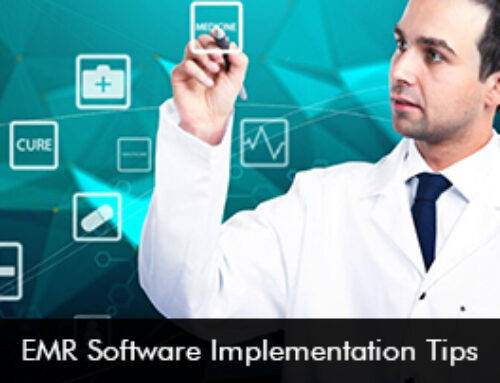There is nothing more frustrating than seeing your time go to waste, especially when you are in your workplace. If we want to feel that we have achieved something or made a difference then we’ll have to be more productive. We would never want our work speed to be affected by technology. Many of the physicians are afraid to make a switch to an Electronic Medical Records (EMR) software system due to this very reason.
Loss of productivity continues to be a grave concern for the physicians who are considering a transition to a new Electronic Health Records (EHR) software. Almost 59% of the healthcare physicians who still have not implemented an EHR software say that loss of productivity is the biggest obstacle. This was revealed in a report published by Office of National Coordinator (ONC) in 2014.
Here are 4 important tips for how physician practices can stay on track and not lose valuable time after implementing an EMR system:
MAKE SURE THAT YOUR PRACTICE IS EFFICIENT
You should make sure that your practice has proper internet connectivity and enough speed to handle all tasks. Practices that do not have enough bandwidth will surely experience slowdowns in spite of planning and execution. HealthIT.gov gives many bandwidth recommendations, depending upon the size of the practice.
MAKE SURE THAT YOUR EMR MEETS MU REQUIREMENTS
Before implementing an EMR software you must make sure that it meets all Meaningful Use (MU) requirements. A survey conducted in 2011 said that EMR/PM software that meet MU criteria save physicians’ time in two particular ways:
- 82% of physicians with an EHR software that meets MU criteria agree that e-prescribing (e-Rx) saves them time, compared with 67% of physicians whose EMR system does not meet MU requirements.
- 75% of physicians with an EHR system that meets MU criteria agree that their practice receives lab results faster, compared with 61% of physicians whose Practice Management (PM) software or Electronic Medical Records (EMR) software system does not meet MU criteria.
ADOPT AN EMR WITH TIME-SAVING FEATURES
Before implementing an EMR system you must make that it has the following time-saving features:
Relevant Clinical Content – This includes specific checklists, documents, and tools that support your specialty.
Copy Paste Functionality – The software must offer copy-paste functionality. Using this, practices save a considerable amount of time.
e-Prescribing (e-Rx) – This includes the ability to enter prescriptions using multiple parameters as well as easily search for pharmacies and transmit information.
Patient Portal – The software must include a patient portal can be used to access lab results, schedule appointments, pay bills, request refills, and message physicians directly.
Patient Dashboard – The dashboard must include a list of medications, current conditions, and outstanding care items.
Templates – The software should provide built-in customizable templates for each specialty. This saves a lot of time that is wasted in taking notes.
AUTOMATE CERTAIN TASKS
Tell your medical assistants to perform initial reviews of lab results and point information that requires a physician’s attention. You should send automated messages to patients encouraging them to schedule appointments for annual visits or other precautionary facilities.







